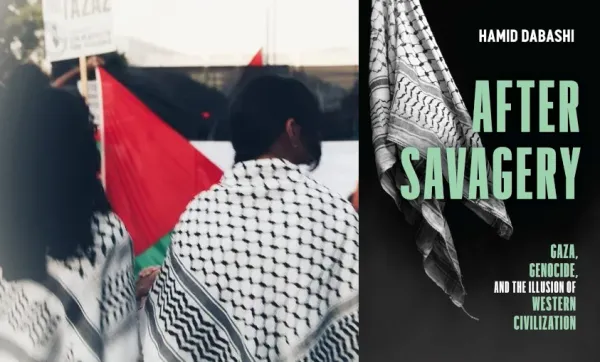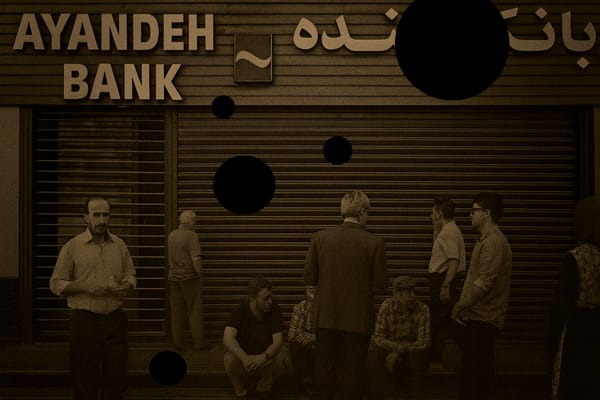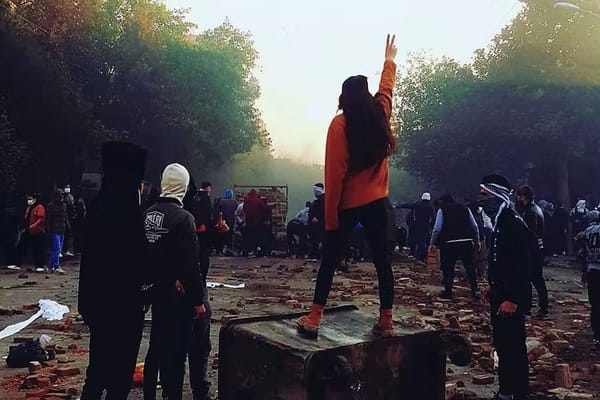Through the Tunnel: Life and the Economy in Tehran
In Tehran, prices move like shadows on a wall, unsteady, alive, changing shape every hour. The city inhales but does not move forward; it circles within itself, whispering the language of survival: rent, exchange rate, bread, medicine, and the hope of a light at the tunnel’s end.

October 10, 2025
Shadows on the Wall
A few days ago, the editor-in-chief of Sazandegi compared Iran’s economy to a “tunnel of terror.” In amusement parks, the tunnel of terror is designed for thrill and laughter; everyone knows that at the end of the darkness there will be sunlight again. But for the people of Iran, long trapped inside their own economic horror show, there is no such guarantee. The tunnel has no visible end, and perhaps no exit at all.
For someone thousands of miles away from Iran’s borders, statistics feel abstract, lifeless. To grasp their meaning, I scroll through Iranian newspapers, searching for descriptions that reveal how numbers breathe inside everyday life. Official data show consumer prices rising at an annual rate hovering between 38 and 40 percent this year. Yet in Tehran, prices move like shadows on a wall, unsteady, alive, changing shape every hour. People have learned to speak with their wallets. Conversations about politics have faded, replaced by a vocabulary that speaks only of survival: rent, exchange rate, gasoline, bread, medicine.
I imagine the city murmuring to itself, calculating its own thresholds of endurance. A man at the bakery checks his phone before paying, as if the number on the screen might change between counting and handing over the cash. A woman in a fruit shop weighs not the bananas but the idea of buying them, asking herself whether this indulgence can be justified today. Street vendors multiply: some standing on sidewalks, others pacing through the metro cars. On every screen, from the television to the LED panels, the same phrase flickers: the snap-back mechanism.
President Pezeshkian’s cabinet and the reformist press are filled with pretentions of fresh promises, fresh initiatives, fresh predictions. They rush to pass legislation that might lift Iran from the Financial Action Task Force (FATF) blacklist. But the city’s murmur tells another story, of distrust and weary calculation. Every household rehearses the same logic: the loss will come anyway; just try to delay it a little longer. The “blacklist,” after all, includes countries where the risk of money-laundering or terrorism, state-sponsored or otherwise, is deemed high.
To observe from afar, I turn to YouTube, where countless handheld cameras now roam Tehran’s neighborhoods. These semi-touristic vlogs have multiplied astonishingly. In them I see luxury galleries and shopping malls that could provoke envy even in my own New York, luxury to the power of one hundred. Fereshteh Street and its glittering buildings evoke in my mind the boutiques of Fifth Avenue. Around Lake Chitgar, new towers rise beside a boardwalk of cafés and restaurants, industrial music thudding through arcades. Every signboard bears a foreign name. In these islands of affluence and display, the city’s murmurs vanish. Who, I wonder, shops here?
From aerial shots of northern Tehran, the economy still appears to breathe: cranes sway over the skyline, highways crawl with traffic. In mid-range views, new cafés keep opening one after another. Yet the city’s true rhythm lies elsewhere, in an economy of waiting, of suspended transactions and half-finished dreams. The city inhales, but it does not move forward; it circles within itself.
An Economy of Contingency
According to Eghtesad Online, Iran’s economy contracted in the spring of 1404 (2025). The Statistical Center of Iran reported negative GDP growth in early 2025, driven by declines in industry (– 1.7 percent) and agriculture (– 2.7 percent).
In offices and companies, salaries are delayed. Landlords demand larger deposits, fearful of tomorrow’s exchange rate. For small businesses, access to imported parts and raw materials has turned into a cat-and-mouse game with sanctions. A single shipment stuck in customs can silence a workshop for months. Power and water shortages deepen the instability.
The language of production has become a whisper of connections: “I’ve got a friend who knows someone in Dubai.” “They pay in dollars over there; you’ll get your money here in tomans.” “I have a dealer in Malaysia who wires directly to New York.”
Inside Tehran’s small offices, deals depend on a chain of ifs: “If we can survive until spring, maybe things will improve.” “If the exchange rate stabilizes.” “If negotiations with the US resume…”
In capitalist economies everywhere, hope and security are conditional, the gamble of gain and loss. But inside the tunnel of Iran’s economy, that gamble has taken on the form of prayer and divination.
This is the predicament of the middle class, the very group meant to be the backbone of urban consumer life. Teachers drive taxis after school. Engineers rent out spare rooms by the night. A recent graduate sells clothes on Instagram. Families who once spent summers on the Caspian coast now think twice before serving meat twice a week. Rents have tripled in three years; housing loans are a mirage; home ownership, a fading dream. “Convert everything to gold. Send the kids abroad, as soon as possible.”
According to the World Bank’s Iran Economic Monitor (Spring 2024), Iran recorded a net capital account deficit of roughly US $20 billion, the largest in recent history, a 25 percent rise over the previous year. The figure reflects accelerating capital flight as companies and households move assets abroad to shield them from currency collapse and political uncertainty.
Eghtesad Online notes that “agriculture remains the Achilles’ heel of Iran’s economy. The sector’s [negative] – 2.7 percent growth, especially in farming, horticulture, and livestock, is a direct result of water scarcity, climate change, and decaying production infrastructure. If this trend continues, food security will be jeopardized, forcing greater dependence on imports.”
The middle class has mastered the art of keeping up appearances while slowly eroding from within. It cancels its gym membership to keep its iPhone. It skips a ride on Snapp to pay for Wi-Fi. (And let me add: Tehran’s clean, efficient subway truly is a divine gift, enviable even to New Yorkers.) The middle class possesses a collective instinct for pretending that everything is normal, even as it collapses in private. An Iranian sociologist has given this phenomenon a name: “the normalization of crisis.”
The Shadow Economy
Every sanction breeds its twin: an opportunity for those who know how to move in the dark and keep the informal economy alive. Around the Grand Bazaar, in the narrow lanes behind Ferdowsi Square, dollars pass quietly from hand to hand. In the official economy, foreign exchange is strictly controlled; unofficially, it flows like an underground river that never stops moving. The value of the rial has fallen to roughly half of what it was four years ago.
The brokers who once traded only in currency now manage everything: medicine, car parts, cosmetics, even infant formula, goods that arrive through channels no ministry dares publicly acknowledge. In these shadow networks, survival itself has become a profession. The art of evading sanctions has turned into its own labor market, informal, precarious, and unproductive, but perversely efficient.
A young man who once studied industrial design now buys secondhand smartphones from Gulf sheikhdoms and resells them in Tehran. A retired customs officer offers “consulting services” to merchants seeking loopholes. A mother of two runs a small Telegram group sourcing foreign medication for cancer patients, charging a modest fee to cover “transport risk.” These people are not criminals; they are the economic antibodies of a sanctioned nation. Yet the existence of these antidotes only deepens the illness over time. The more people depend on the black market, the faster trust in the official one erodes.
This parallel economy, hidden from the state, untaxed, uncounted, now shapes daily life while remaining absent from national planning. According to a study published this year by two Iranian economists, the shadow economy is estimated to account for more than one-third of Iran’s GDP.
Exit from the Tunnel
Government officials appear on television almost daily, promising resilience. Between flattering the Supreme Leader and praising their own ingenuity, they speak of “creative export channels,” “domestic production growth,” and “managing inflationary expectations.” When they try to sound clear and accessible, they resort to clichés.
Iran’s rulers speak two languages. On one side are the reformists, perpetually complaining about the extravagance of the deep state. Yet by extravagance they mean not only the opaque budgets of unelected institutions, but also subsidies, insurance, and social services. Their ideology commands them to privatize public assets, cut subsidies, raise the retirement age, and lay off workers under the euphemism of “workforce adjustment.” These are the same voices that only weeks ago were promoting a “paradigm shift in governance,” a new foreign policy, and the notion that Iran’s doors were “open to American investment.” Such “solutions,” in the name of liberalization, may momentarily help the circulation of capital, but they will also drive poverty higher and widen the social divide.
On the other side are the voices of the Supreme Leader, Kayhan newspaper, and the self-described “axis of resistance.” Since Washington has shown little appetite for renewed negotiations, they have returned to their ritual of defiance, repeating the same Shiite-inflected slogans of resistance and non-surrender, without the faintest idea of how to lead the country out of this economic nightmare. From the Leader’s Office to the Revolutionary Guard commanders and cabinet ministers, the stewards of the Islamic Republic are bankrupt of both integrity and imagination.
According to Fararu, “the country’s budget deficit for 1404 (2025–26) has been officially announced as 800 trillion tomans.” Tasnim News Agency reports that “the government must issue 800 trillion tomans in bonds, which reflects the size of the deficit.” Asr-e Iran, citing the International Monetary Fund, places the real figure even higher, at 1,800 trillion tomans. These numbers may sound abstract to you and me, but they are large enough to endanger the salaries and futures of every citizen.
To fill the gap, the government prints money or borrows from banks, reinforcing the very cycle it claims to escape. One day it caps prices; the next day it cuts subsidies, each measure canceling the other out.
As a distant observer, I can only rely on others’ accounts, unable to partake in the city’s own murmured conversation. Some say Tehran has grown quieter after midnight. The pandemic taught people to stay home; the twelve-day war drove them out of town; now the dark tunnel of the economy has sent them back indoors. Yet in photographs, the city’s skyline is anything but dark: neon lights, the Milad Tower, the billboards, they still glow, not unlike the towers and avenues of New York.
Perhaps walking through Tehran today gives one a double sensation: a society both fragile and enduring. The shopkeeper still lifts his shutter at dawn, knowing that sales will barely cover the rent. The student dreaming of emigration continues her studies with quiet determination. The taxi driver jokes about the next currency plunge and Israel’s next strike, as though fate itself were an unalterable script. The end of the tunnel is nowhere in sight. And yet, could there, just a little farther ahead, be a faint turn toward light? /// A. K.
We welcome your thoughts and reflections. write to the editors at editors@irandraft.com
Stay with us as we follow the stories that shape Iran’s present and imagine its future. Subscribe to receive our latest essays, analyses, and reflections.



